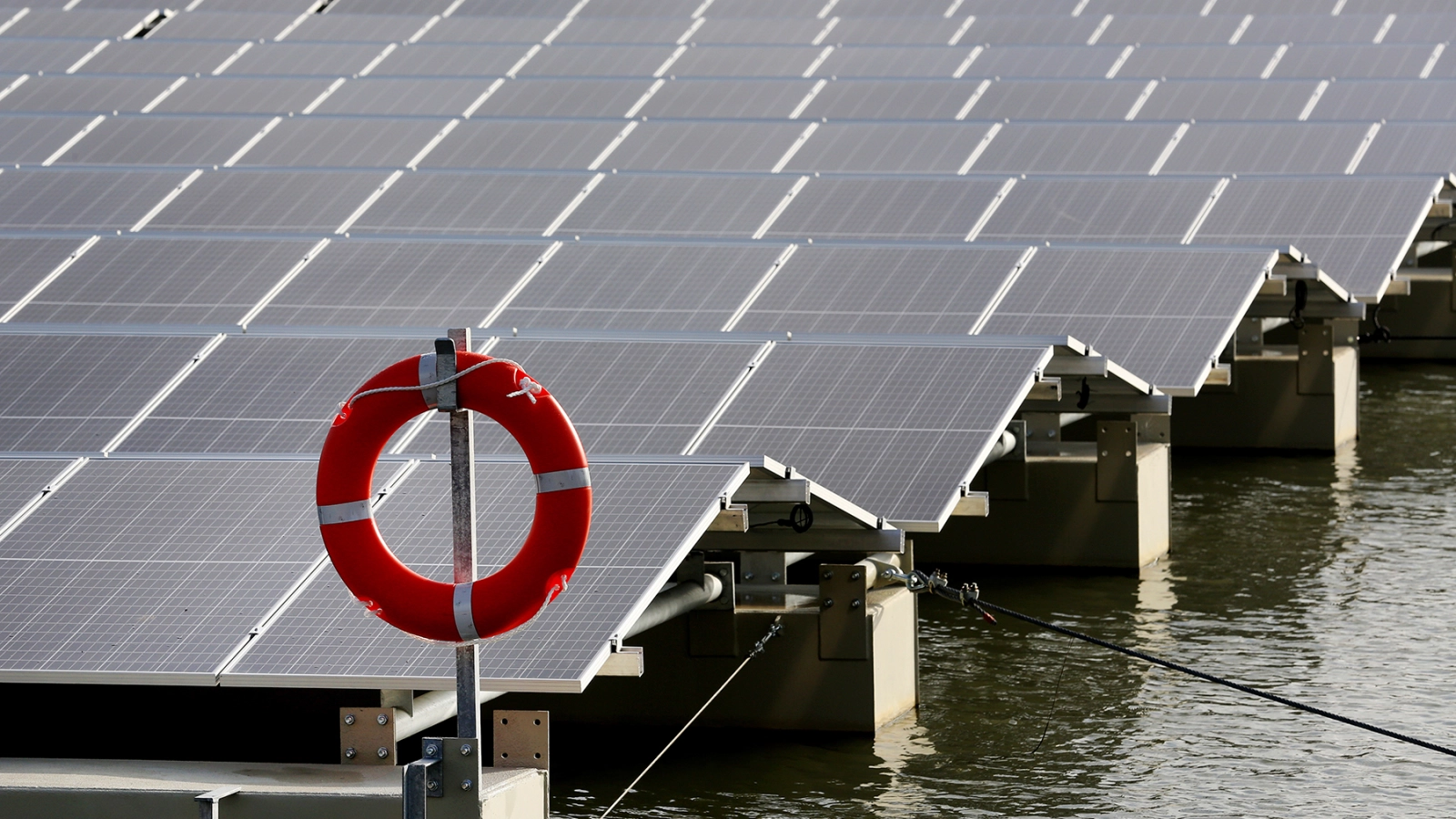Climate change is one of the most pressing issues of our time. From rising sea levels to more frequent and severe natural disasters, the effects of climate change are being felt around the world. As a result, there is an urgent need to develop new technologies that can help address this problem. As the urgency of tackling climate change grows, innovative technologies are paving the way for a sustainable future. Groundbreaking advancements in green energy solutions and carbon capture technologies have emerged, offering hope in the battle against climate change. These developments are not only transforming industries but also reshaping the way we perceive and address environmental challenges.
Green Energy Solutions
The relentless pursuit of clean and renewable energy sources has led to remarkable breakthroughs in green energy solutions. Solar power, for instance, has undergone tremendous advancements, making it one of the most promising alternatives to fossil fuels. Improved efficiency in solar panels, along with significant cost reductions, has made solar energy more accessible than ever before. Furthermore, the integration of smart grid technology enables better management and distribution of electricity, maximizing the potential of renewable energy sources.
Another key player in the green energy revolution is wind power. With the development of advanced turbine technologies, wind farms are becoming more efficient and cost-effective. Cutting-edge designs and larger turbines capture stronger winds, generating higher energy outputs. Offshore wind farms, in particular, have gained traction due to their vast potential and ability to harness strong coastal winds.
In addition to solar and wind energy, innovative solutions such as tidal and geothermal power are gaining recognition. Tidal power harnesses the predictable rise and fall of ocean tides to generate electricity, while geothermal energy taps into the heat generated beneath the Earth’s surface. These technologies have the potential to provide consistent and sustainable energy sources, reducing our dependence on fossil fuels and minimizing greenhouse gas emissions.
Carbon Capture Technologies
Addressing the existing carbon emissions is crucial in combating climate change. Carbon capture technologies offer a promising avenue to capture and store carbon dioxide, mitigating its impact on the atmosphere. Significant strides have been made in this field, bringing forth innovative solutions.
Direct Air Capture (DAC) technology has garnered attention as an effective method to remove carbon dioxide directly from the air. Large-scale DAC facilities utilize specialized filters to capture carbon dioxide, which can then be either stored underground or utilized in various industrial processes. This technology shows great potential in reducing atmospheric carbon dioxide levels and mitigating climate change.
Another breakthrough in carbon capture is the development of carbon capture and utilization (CCU) technologies. These solutions not only capture carbon emissions but also convert them into valuable products. For instance, carbon dioxide can be utilized in the production of building materials, plastics, and even fuels. By transforming a harmful greenhouse gas into a valuable resource, CCU technologies offer a dual benefit in terms of carbon reduction and the creation of economic opportunities.
Furthermore, advancements in carbon capture within power plants and industrial facilities are transforming traditional energy generation processes. Carbon capture and storage (CCS) technologies allow for the capture of carbon emissions before they are released into the atmosphere. The captured carbon can then be stored deep underground or repurposed for industrial use. Integrating CCS technologies into existing infrastructure has the potential to significantly reduce carbon emissions from major sources.
In addition to the aforementioned measures, there are several other technologies being developed to tackle the pressing issue of climate change. One such area of focus is energy efficiency. By implementing energy-efficient practices and technologies, such as advanced insulation, efficient lighting systems, and smart appliances, we can significantly reduce the amount of energy consumed in various sectors. This, in turn, leads to a decrease in greenhouse gas emissions and a more sustainable use of resources.
Electric vehicles (EVs) are another promising technology that can contribute to mitigating climate change. As the transportation sector is a major contributor to greenhouse gas emissions, the shift from conventional gasoline-powered cars to EVs presents a significant opportunity. Electric vehicles produce zero tailpipe emissions and can be powered by renewable energy sources, further reducing their carbon footprint. As the adoption of EVs continues to grow, it not only reduces pollution but also decreases our dependence on fossil fuels.
Smart grids are yet another innovative technology that can play a crucial role in addressing climate change. A smart grid is an advanced electrical grid system that incorporates digital communication and automation to optimize the generation, distribution, and consumption of electricity. By integrating renewable energy sources like solar and wind power into the grid, smart grids enable better management of fluctuating energy supply. They also facilitate the efficient use of energy by monitoring and adjusting power demand in real-time, resulting in reduced wastage and more reliable energy distribution.
The implementation and widespread adoption of these technologies are paramount in the global effort to combat climate change and safeguard the planet for future generations. By embracing energy efficiency measures, transitioning to electric vehicles, and establishing smart grid systems, we can collectively reduce greenhouse gas emissions, promote sustainability, and create a more resilient and environmentally friendly world. These technological advancements are not only essential for the preservation of our planet but also present tremendous economic opportunities and job creation in the renewable energy sector. It is crucial that governments, industries, and individuals collaborate and support the development and deployment of these technologies to accelerate the transition towards a sustainable and low-carbon future.
The impact of technology on addressing climate change cannot be overstated. With the advancement of green energy solutions and the implementation of carbon capture technologies, significant progress has been made in reducing greenhouse gas emissions on a global scale. These technologies have allowed many countries to transition away from fossil fuels and adopt cleaner and more sustainable energy sources.
Green energy solutions, such as solar power, wind energy, and hydropower, have witnessed remarkable growth and have become increasingly cost-effective. Their widespread adoption has led to a substantial reduction in carbon dioxide emissions, contributing to the mitigation of climate change. Moreover, these renewable energy sources offer opportunities for decentralized energy generation, enabling communities to become self-sufficient and less reliant on traditional energy infrastructure.
Carbon capture technologies have also emerged as a promising tool in the fight against climate change. These technologies capture carbon dioxide emissions from industrial processes or directly from the atmosphere and store them in underground geological formations or utilize them for other purposes. By preventing significant amounts of greenhouse gases from entering the atmosphere, carbon capture technologies help mitigate the effects of climate change and provide a viable option for industries to reduce their carbon footprint.
However, while technology has the potential to be a powerful force for positive change, it is crucial to address concerns regarding its unintended consequences. One concern is the potential for technology to perpetuate existing biases and inequalities, leading to over-policing in certain communities. For example, as the deployment of climate monitoring technologies and surveillance systems increases, there is a risk of disproportionate surveillance and enforcement in marginalized communities, exacerbating social injustices. It is essential to ensure that the development and deployment of such technologies are carried out with equity, transparency, and respect for individual rights, to prevent the reinforcement of systemic biases.
Moreover, it is important to consider the broader social and ethical implications of technological interventions in addressing climate change. As new technologies are developed and implemented, it is necessary to engage in robust ethical discussions and establish regulatory frameworks that prioritize sustainability, privacy, and social justice. This includes actively involving affected communities in decision-making processes, conducting thorough assessments of potential environmental and social impacts, and implementing safeguards to prevent the misuse or exploitation of technology.
In conclusion, technology plays a pivotal role in addressing climate change by enabling the adoption of green energy solutions and implementing carbon capture technologies. These advancements have proven effective in reducing greenhouse gas emissions globally. However, it is crucial to address concerns related to potential biases and over-policing that technology may inadvertently perpetuate. By considering the ethical implications, engaging in inclusive decision-making, and implementing safeguards, we can harness the power of technology to combat climate change while ensuring a just and sustainable future for all.
The development of new technologies to combat climate change is essential to combat the effects of climate change and protect the planet. By promoting green energy solutions, carbon capture technologies, and other sustainable technologies, we can help reduce greenhouse gas emissions and promote sustainability. Governments and organizations need to prioritize sustainability and work together to address the issue of climate change to create a brighter and more sustainable future for all.



